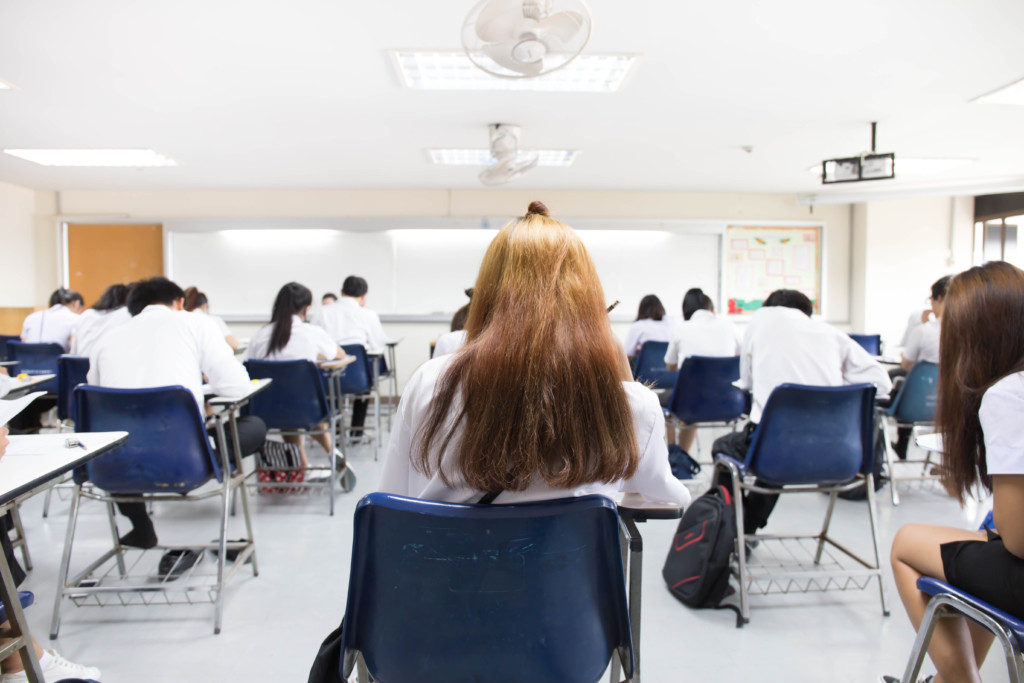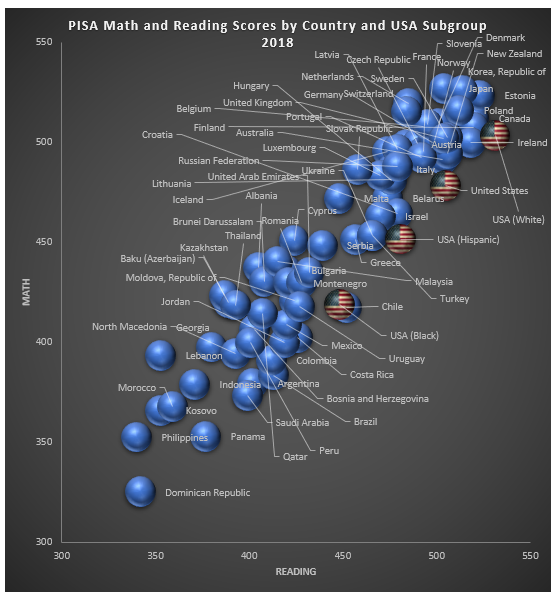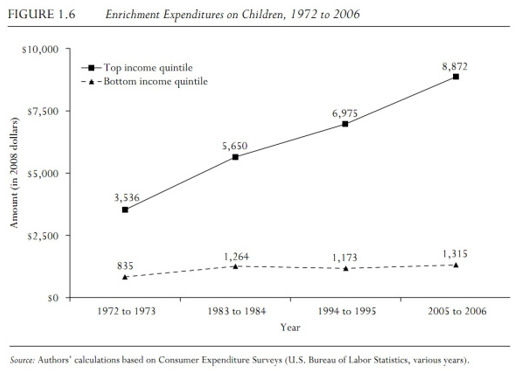
PISA, the OECD's Programme for International Student Assessment, measures 15-year-olds’ ability to use their reading, mathematics and science knowledge and skills to meet real-life challenges.
The performance of American 15-year-olds in reading and math has remained stagnant for the past two decades according to results released this past week from the Organisation for Economic Co-operation and Development (OECD). Meanwhile, the achievement gap in reading between high- and low-performing students has grown wider.
 The less-than-stellar results from the exam, the Program for International Student Assessment (PISA), mirror recently released scores from the National Assessment of Educational Progress (NAEP), which I described in an earlier post as an Agincourt-level disaster.
The less-than-stellar results from the exam, the Program for International Student Assessment (PISA), mirror recently released scores from the National Assessment of Educational Progress (NAEP), which I described in an earlier post as an Agincourt-level disaster.
Chile is the country most closely resembling the math and reading scores of American black students; Turkey most closely matches the combined achievement of American Hispanic students. Yet the United States spends more than twice as much per pupil as either Chile or Turkey.
Even the scores for American white students, while internationally competitive, appear less than impressive.
Estonia scores a bit higher while spending half as much per pupil as the United States. Moreover, scholars have made us aware that higher-income American families spend lavishly on enrichment options for their K-12 students (tutoring, club sports, etc.), and that this spending has increased steadily over time.
How many Estonian families do you reckon spend $8,872 per child per year on enrichment spending? Since the average American income is more than $26,000 per person higher than that in Estonia after adjusting for purchasing power, I’m going to walk out on a limb and dare a guess: Not many.

And, while enrichment spending apparently has little to do with improvement among low-income students (the trend in such spending is flat since the early 1980s), that isn’t the case among advantaged students. Richer in schools twice as well funded but underperforming is not a great place for America’s highest-performing subgroup to find itself vis-à-vis Estonia.
Even without these latest PISA results, but reinforced in light of them, it’s clear that without the benefit of lavish enrichment spending and other related advantages, the high levels of spending in American schools appears broadly ineffectual for students of color.
After more than a decade working in education reform I learned long ago that if I stopped to kick every snapping dog along the pathway, I would never arrive where I needed to go. But every now and then I read something, such as Diane Ravitch’s latest op-ed on CNN.com, and have to take a breath and ask “Really?” One of my earliest resources as I was starting in education reform back around 2000 was her book, “Left Back: A Century of Failed School Reforms.” But now it appears she’s utterly abandoned that historical analysis in favor of status quo incrementalism and apologies for failure.
Let’s just think about Dr. Ravitch’s assertions:
The NAEP test scores of American students are at their highest point in history: for black students, white students, Hispanic students, and Asian students.
They are at their highest point in history in fourth grade and in eighth grade, in reading and math.
I tend to agree with Dr. Ravitch that the National Assessment of Educational Progress (NAEP) test is the most valid measure of academic performance. But why is that? Primarily, as my American Center for School Choice colleague, Alan Bonsteel, recently reminded us, it is because most states have catered to their own self-interest, aligning examinations to weak standards to give the appearance of academic achievement rather than actually increasing the amount of learning necessary for student success in this century. So for most of the last 10 years, under No Child Left Behind, we permitted widespread creation of dysfunctional and often meaningless standards aligned to dysfunctional and meaningless tests. Logically, this history does not make for a persuasive indictment of the value of legitimate standards and assessment tools.
But beyond that, let’s look at Dr. Ravitch’s assertion:
The “highest point in history” while true, is relative to what?
With the exception of the Asian/Pacific Islander group, I doubt anyone is throwing a parade for the educational system’s accomplishments over the last 20 years. Are 7-point gains over 20 years for African-Americans and Hispanics and a 9-point gain for white students really the kind of progress we expect after multiple billions of real increased educational spending? Yet this seems to be what Dr. Ravitch finds acceptable performance. (more…)